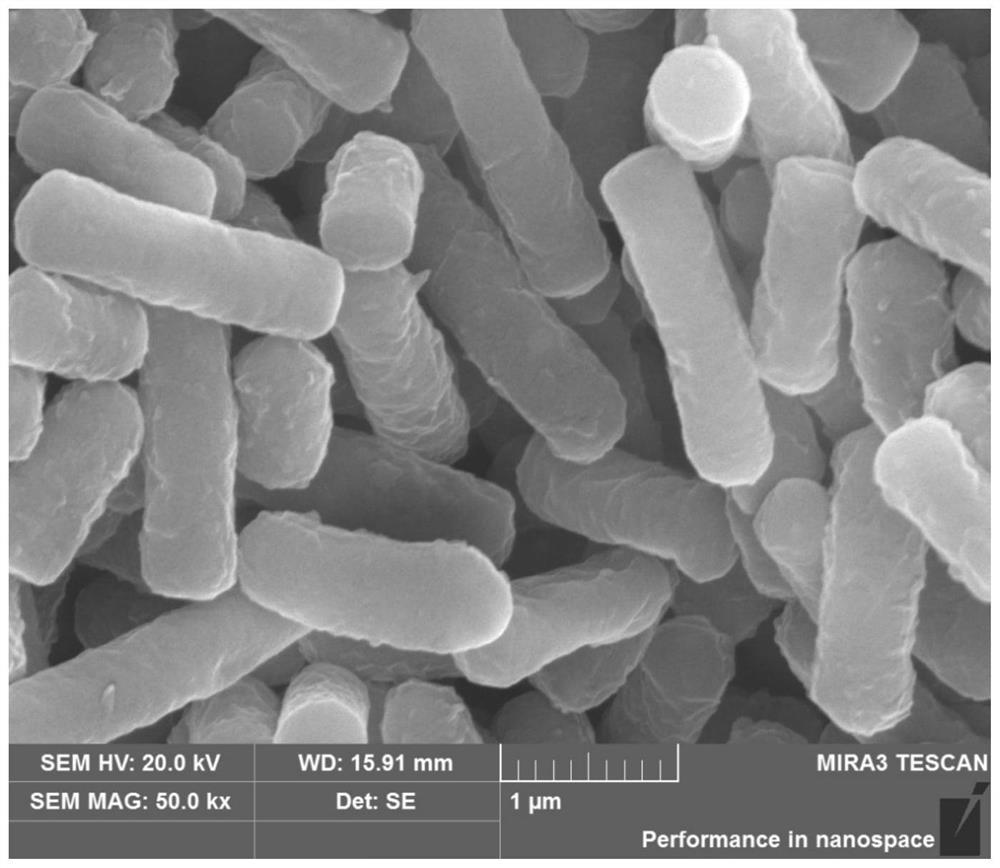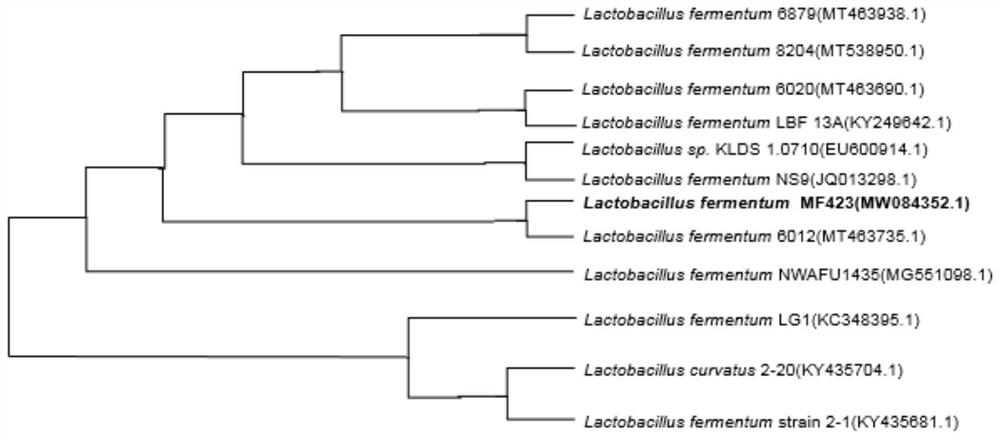Lactobacillus fermentum MF423, fermented rice bran extract thereof and application of lactobacillus fermentum MF423 and fermented rice bran extract
A technology of fermenting Lactobacillus and rice bran extract, which is applied in the field of microorganisms, can solve the problems of low utilization rate of rice bran, achieve the effects of reducing glucose content, inhibiting the occurrence of low-grade inflammation, and improving insulin resistance
- Summary
- Abstract
- Description
- Claims
- Application Information
AI Technical Summary
Problems solved by technology
Method used
Image
Examples
Embodiment 1
[0061] Example 1 Separation of Lactobacillus fermentum (Lactobacillus fermentum) MF423 Sample processing: draw 500 μL of rice flour fermentation waste water stored at 4°C, draw 50 μL, 100 μL, and 200 μL respectively and spread them on the MRS solid medium plate. Repeat three times, and then place them in a 37°C incubator for static culture. After each colony grows well, streak the plate repeatedly, separate and purify, and finally obtain strain MF423.
Embodiment 2
[0062] Example 2 Bacterial Strain MF423 Biological Characters and Physiological Biochemical and Molecular Identification
[0063] S1. Morphological characteristics: The morphology of the strain MF423 under the scanning electron microscope is shown in figure 1 , The colony morphology of the strain was cultured on MRS solid medium plate for 24 hours: the colony was white, round, with smooth surface and neat edges; Gram staining was positive, and the cells were rod-shaped.
[0064] S2. Physiological and biochemical characteristics: bacterial strain MF423 of the present invention is measured through physiological and biochemical, and contact enzyme test is positive, and methyl red test is negative, and V-P test is negative, and starch hydrolysis, agar hydrolysis, Tween 80 hydrolysis are negative, and growth temperature is 4-30°C.
[0065] See Table 1.
[0066] Table 1 Physiological and biochemical characteristics of Lactobacillus fermentum MF423
[0067]
[0068]
[0069]...
Embodiment 3 3
[0081] Example 3 In vitro antioxidant activity of three different Lactobacillus fermented rice bran extracts
[0082] Inoculate the three strains of Lactobacillus in MRS liquid culture medium respectively, culture at 37°C for 24 hours, inoculate the fermentation medium at 2% respectively, culture at 37°C, take the fermentation liquid fermented for 24 hours, and centrifuge twice at 10000rpm to remove bacteria and Rice bran residue, take the upper layer of fermentation broth to measure the hydroxyl radical scavenging activity: add 40 μL Fe to a clean EP tube 2+ , then add 40μL OP, mix well, the solution turns into an orange-red complex, and add to the experimental group (A s ) and the negative control group (A n ) was added with 80 μL sample, the blank control group (A b ) add 80μL dd H 2 O, after mixing evenly, start the reaction, the experimental group (A s ) by adding 40 μL H 2 o 2 , negative control group (A n ) by adding 40 μL H 2 O, blank control group (A b ) by a...
PUM
 Login to View More
Login to View More Abstract
Description
Claims
Application Information
 Login to View More
Login to View More - R&D
- Intellectual Property
- Life Sciences
- Materials
- Tech Scout
- Unparalleled Data Quality
- Higher Quality Content
- 60% Fewer Hallucinations
Browse by: Latest US Patents, China's latest patents, Technical Efficacy Thesaurus, Application Domain, Technology Topic, Popular Technical Reports.
© 2025 PatSnap. All rights reserved.Legal|Privacy policy|Modern Slavery Act Transparency Statement|Sitemap|About US| Contact US: help@patsnap.com



